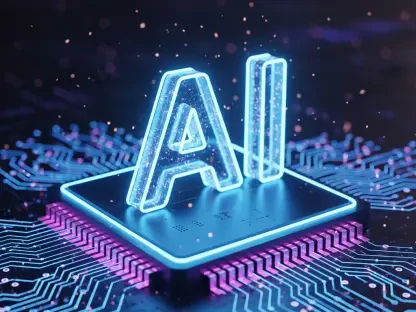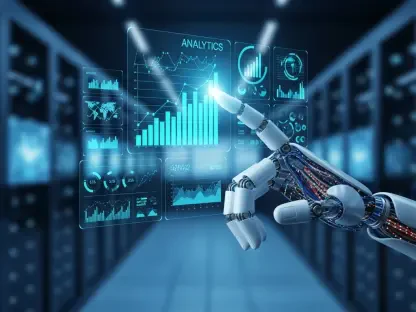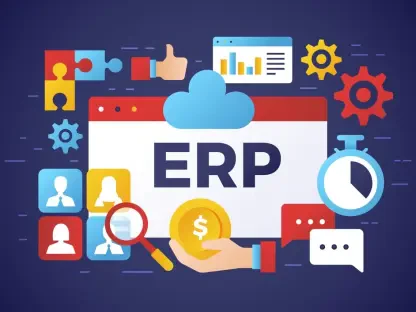In the rapidly evolving landscape of artificial intelligence and machine learning, organizations are increasingly seeking effective strategies to integrate these technologies into their operations. In 2025, mastering MLops (machine learning operations) will be crucial for businesses aiming to leverage AI for measurable impacts. As we move forward, it’s imperative for businesses to delve deeply into understanding foundational differences between AI models, optimization techniques, advancements in ML engineering, efficient scaling strategies, and defining success metrics to ensure that AI/ML initiatives result in real business value.
Understanding Foundational Concepts
Before diving into the complexities of MLops, it is essential for organizations to grasp the foundational differences between generative AI models and traditional ML models. This understanding begins with recognizing that generative AI models excel in handling unstructured data, such as text and images, which often come with higher operational costs and complexity. Unlike traditional ML models, which are more straightforward and cost-effective, generative AI models often demand more computational power and entail higher latency.
Generative AI models necessitate intricate processes to manage prompts, conversation histories, and integrate private data sources. They are often tailored for complex unstructured data tasks, making them an indispensable asset for businesses dealing in heterogeneous types of data inputs. In contrast, traditional ML models can rely on pre-trained architectures or lightweight training processes. These attributes render smaller, traditional models as more suitable for specific, well-defined challenges, enabling quicker implementations and lower costs. Organizations must assess these characteristics to determine which AI model type aligns best with their specific operational needs and data contexts.
Model Optimization and Monitoring
Optimizing ML models for specific use cases stands as a crucial step in mastering MLops. Traditional ML models can be fine-tuned either using established pre-trained models or developed entirely from scratch to address custom needs. Generative AI introduces advanced options like retrieval-augmented generation (RAG), which can significantly enhance model outputs by leveraging private data. The choice between employing a versatile general-purpose model or a specialized one hinges on what best meets the business’s operational requirements and market demands.
Monitoring models demands distinct approaches for traditional models compared to generative AI models. Standard ML models frequently rely on well-defined, quantitative metrics such as accuracy, precision, and F1 scores. These metrics are clearly delineated and relatively easy to interpret. On the other hand, generative AI models often deal with subjective metrics like user engagement and relevance, which can be more challenging to quantify. A notable strategy entails designing demonstrably scalable architectures, wherein each data component and processing step can be systematically measured to ensure it aligns with and drives the desired business outcomes.
Advancements in ML Engineering
The field of ML engineering has witnessed significant advancements, contributing to the widespread adoption of various open-source solutions. In traditional machine learning, widely adopted open-source solutions like LSTM (long short-term memory) architectures and YOLO (you only look once) models have become mainstays, with libraries like XGBoost and Scikit-learn being particularly favored for their versatility and accessibility. These tools facilitate the deployment of efficient, cost-effective models, empowering businesses to harness AI’s potential without incurring excessive costs.
In the domain of generative AI, commercial solutions such as OpenAI’s GPT models and Google’s Gemini have notably risen to prominence due to their complex training requirements and high cost of implementation. However, open-source alternatives are gaining traction in this space as well. Models like Llama and Stable Diffusion present cost-effective options, attracting companies willing to fine-tune these models based on their specific data. Despite potential licensing and integration challenges, the rise of these open-source models offers innovative pathways for companies wishing to avoid the hefty expenses associated with commercial solutions, thereby democratizing access to cutting-edge AI technology.
Efficient Scaling of ML Systems
To scale ML systems effectively, it is imperative to implement best practices in data management along with well-thought-out architectural strategies. Techniques like retrieval-augmented generation (RAG) prove particularly valuable as they allow companies to tailor AI models to fit specific contexts, thereby enhancing the models’ relevance and accuracy of outputs. By integrating internal data meticulously, organizations can create models that respond more accurately to real-world user queries.
Embedding and querying internal data, including product documentation within a vector database, allow for more refined and contextually relevant AI model responses. This method ensures that the AI models operate at a level of relevance that meets or exceeds user expectations, improving overall performance and user satisfaction. Such practices not only make AI systems scalable but also ensure their contextual adaptability. Efficiently scaling these systems means that as business data grows, the AI models remain robust, agile, and responsive to dynamic user requirements.
Key Architectural Considerations
Constructing efficient and scalable MLops architectures necessitates a meticulous integration of various components such as embeddings, prompts, and vector stores. Whether deploying AI for global or local markets, fine-tuning models for specific languages, geographies, or tailored use cases is essential for achieving optimal performance. Such attention to detail can significantly impact the model’s effectiveness and user acceptance.
Continuous A/B testing of the various building blocks within the architecture is recommended to refine outcomes and improve overall solution efficacy. This iterative process not only ensures the architecture remains robust but also adaptable to evolving business requirements. As user expectations and market conditions change, the ability to pivot and improve the solution architecture through constant testing can spell the difference between success and obsolescence. The dynamic nature of AI models means businesses must always be prepared to iterate, improve, and adapt their models to maintain relevancy and performance.
Metrics for Model Success
Aligning AI model outcomes with core business objectives is fundamental for assessing and measuring success. Metrics such as customer satisfaction scores and click-through rates offer critical insights into the real-world impact of AI solutions. These metrics generally provide a direct view of user engagement levels and subsequent business outcomes. For generative AI models, human feedback plays a critical role, offering nuance and context that automated metrics often miss, thereby helping to fine-tune the models’ metrics and enhance performance.
Advanced AI tools can expedite or, in some instances, replace the role of human reviewers, thereby simplifying the evaluation process while maintaining high levels of accuracy and reliability. For businesses, closing the feedback loop by connecting model predictions to user actions is paramount to building and maintaining effective models. Human-in-the-loop systems ensure continuous alignment with business objectives, guaranteeing that the AI models remain contextually relevant and aligned with the strategic goals.
Focus on Solutions, Not Just Models
In today’s fast-paced world of artificial intelligence and machine learning, organizations are urgently seeking effective ways to integrate these technologies into their operations. As we approach 2025, mastering MLops (machine learning operations) will become vital for businesses looking to harness AI for significant and measurable impacts. Moving forward, it is essential for companies to deeply understand the foundational distinctions between various AI models and optimization techniques. Additionally, advancements in ML engineering, efficient scaling strategies, and defining clear success metrics are crucial. These elements ensure that AI and ML initiatives result in real and tangible business value. Companies need to focus on building robust frameworks that can handle the complexity of ML integration, fostering a culture of continuous learning, and staying updated with the latest technological advancements. By doing so, they will not only stay competitive but also lead in their respective industries, effectively using AI and ML to transform their operations and achieve their business goals.









